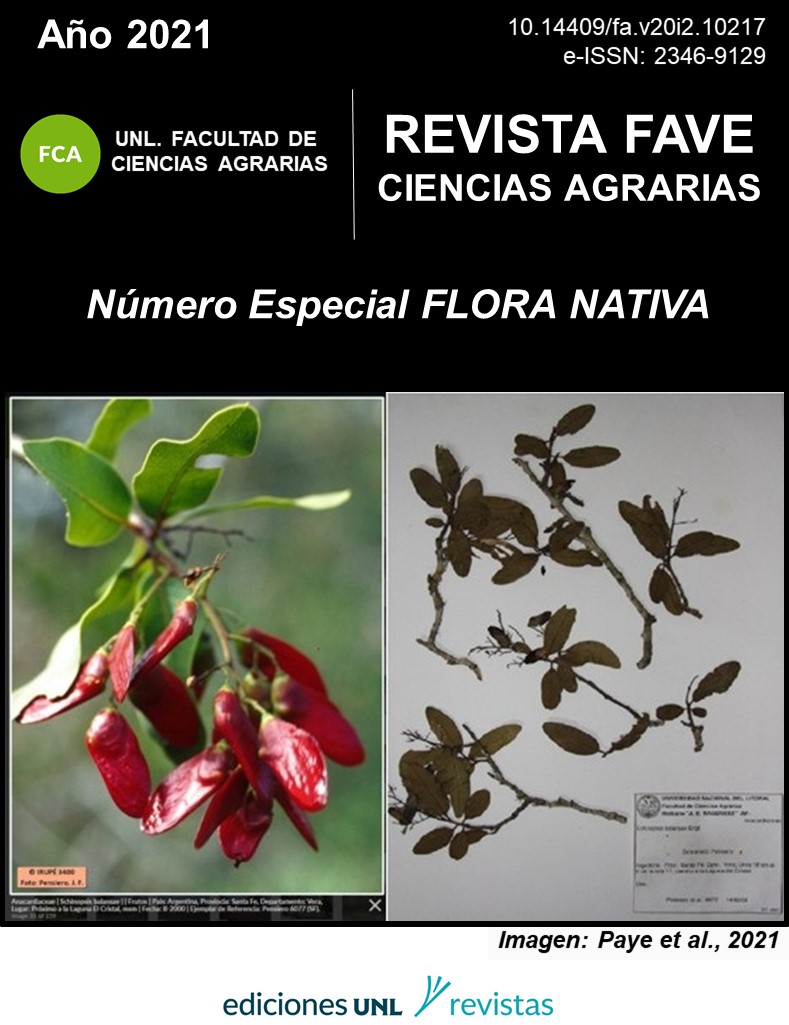Propagation by seeds and container cultivation of Valeriana carnosa Sm. (Valerianoideae, Caprifoliaceae) in San Carlos de Bariloche. Río Negro
DOI:
https://doi.org/10.14409/fa.v20i1.10259Keywords:
Valeriana, sedative, pregerminative treatments, container cultivationAbstract
Valeriana carnosa is one of the native species of Patagonia most recognized by the local pharmacopoeia. Its roots contain chemical compounds used as a sedative and are collected with an extractive criterion. The objective of the work was to obtain information on seed propagation and container cultivation, which would allow establishing future productions, reducing the impact on wild populations. Seeds were collected in Cerro Otto, in Bariloche, Rio Negro. Control (TO) and 3 pregerminative treatments were performed: Stratification / cold-wet-30 days (T1), Stratification / cold-wet-10 days (T2), Soak KNO3-24 hs (T3). The sowing was done in seedlings and after 90 days the results were: TO: 20%, T1: 62%, T2: 35%, T3: 21%. The pealing was done on a multi-cell tray-25 and the survival at 90 days was 60 %. The seedlings were repackaged to pot nº14, using 2 substrates: S1 (Substrate-Dynamics3) and S2 (substrate-Soil / pine needles / volcanic ash: 1-1-1). The average values were for height in S1 (12.67 cm) and S2 (8.33 cm) and for the number of outbreaks in S1 (2.73) and S2 (1.67). The results are promising in terms of reproduction and container cultivation.

















